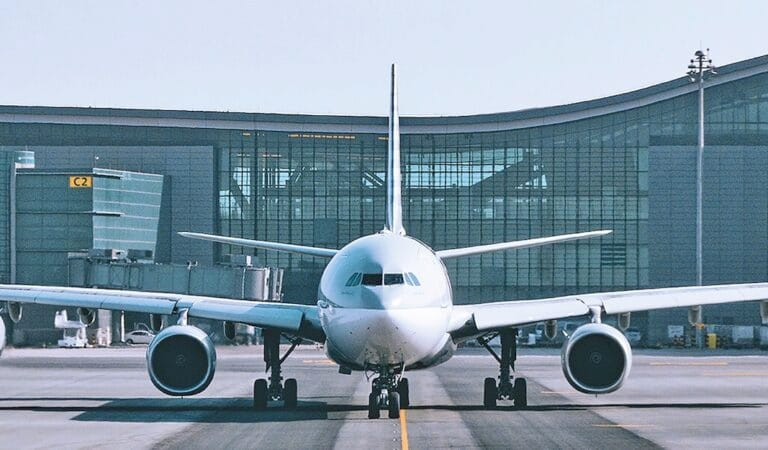- The ‘China +1’ strategy is driving cargo growth across Southeast Asia as manufacturers move operations to Vietnam, Thailand, Indonesia, and Malaysia, increasing demand for electronics, garments, and automotive exports
- TAM Group is expanding ground handling capabilities and digital infrastructure, using automation, data analytics, and advanced cargo systems to improve turnaround times, accuracy, and visibility for shippers
- Local presence in key Southeast Asian markets allows TAM to tailor services, build partnerships, and adapt to regulatory and infrastructure differences, combining agility, innovation, and digital tools to support long-term regional growth
The global air cargo industry is recalibrating its compass as manufacturing powerhouses diversify beyond China. The ‘China +1’ strategy – where manufacturers move parts of their operations to Southeast Asia—is no longer a theory but a logistics reality. And this shift is reshaping the region’s airfreight flows and ground handling infrastructure.
“The ‘China +1’ strategy has significantly influenced cargo flows in Southeast Asia,” Alvin Tam, Senior Vice President, Commercial, TAM Group , told Air Cargo Week. “As companies diversify their manufacturing bases beyond China to countries like Vietnam, Thailand, Indonesia, and Malaysia, there has been a noticeable uptick in cargo volumes across these regions.”
This diversification isn’t just about reducing geopolitical risks. It’s about resilience, agility, and cost optimisation—factors that are now driving investment in regional airfreight infrastructure.
The great relocation
The changing dynamics of supply chains have placed pressure on existing cargo handling facilities, prompting demand for more sophisticated ground handling solutions.
“This shift has led to increased demand for efficient and reliable cargo handling services to support the growing volumes,” Tam explained. “We’ve seen a rise in exports of electronics, garments, and automotive parts, which require specialised handling and logistics solutions.”
As Southeast Asia becomes more prominent in global trade lanes, airports and handlers must keep pace with demand for automation, speed, and transparency—no longer optional luxuries but minimum expectations from shippers and airlines alike.
“This trend has also prompted us to invest in expanding our presence and enhancing our capabilities in these emerging markets to better serve our clients’ evolving needs.”
Tech-led adaptation
To meet the shifting landscape, TAM Group has doubled down on digital transformation. The company’s approach blends operational expertise with an evolving digital toolbox, enabling it to scale alongside rising regional volumes.“Our operations in Southeast Asia are pivotal to our growth strategy,” the company noted. “To stay ahead of the curve, we’ve been investing heavily in digital technologies and innovative solutions. This includes implementing advanced cargo handling systems, automation, and data analytics to streamline operations and enhance efficiency.”
This is more than a tech facelift. TAM Group believes that the ability to harness digital tools will define success in the next phase of Southeast Asia’s air cargo development.
“By leveraging these technologies, we aim to improve turnaround times, reduce errors, and provide better visibility and tracking for our customers.”
Being physically present across key Southeast Asian markets is a strategic imperative—not just a commercial one.
“Our on-ground presence in key markets like Vietnam and Thailand allows us to offer tailored solutions that cater to the specific requirements of each location,” Tam said. “We’re also focused on building strong partnerships with local stakeholders to ensure seamless and efficient service delivery.”
The localisation of services is proving to be a competitive advantage in a region that, while connected by trade, remains fragmented in terms of regulation, infrastructure maturity, and customer expectations.
Eyes on ASEAN
Despite macroeconomic volatility, TAM Group remains optimistic about long-term opportunities in the region. Resilience, the company emphasises, will come from agility and innovation—not scale alone.
“We anticipate continued growth in the cargo sector driven by increasing trade volumes and the rise of e-commerce. Our strategy involves not just expanding our footprint but also enhancing our service offerings through innovation and digitalisation,” Tam said.
Being proactive in a region undergoing such structural transformation requires constant reassessment of customer needs, regulatory shifts, and technological disruption.
“We’re constantly looking at ways to integrate new technologies and processes that can add value to our clients and improve overall service quality.”
TAM Group’s reflections on the ‘China +1’ dynamic highlight a deeper trend: the decentralisation of production and logistics in Asia is not a temporary response to tariffs or pandemics—it’s a strategic recalibration of global supply chains.
While China remains central to global manufacturing, Southeast Asia’s rise is reshaping how cargo moves, how it’s handled, and what shippers expect. The companies that thrive will be those capable of matching digital investment with regional expertise.
“We believe that Southeast Asia will continue to play a critical role in global supply chains, and we’re committed to supporting this growth with our comprehensive range of services and innovative solutions,” Tam stated.




